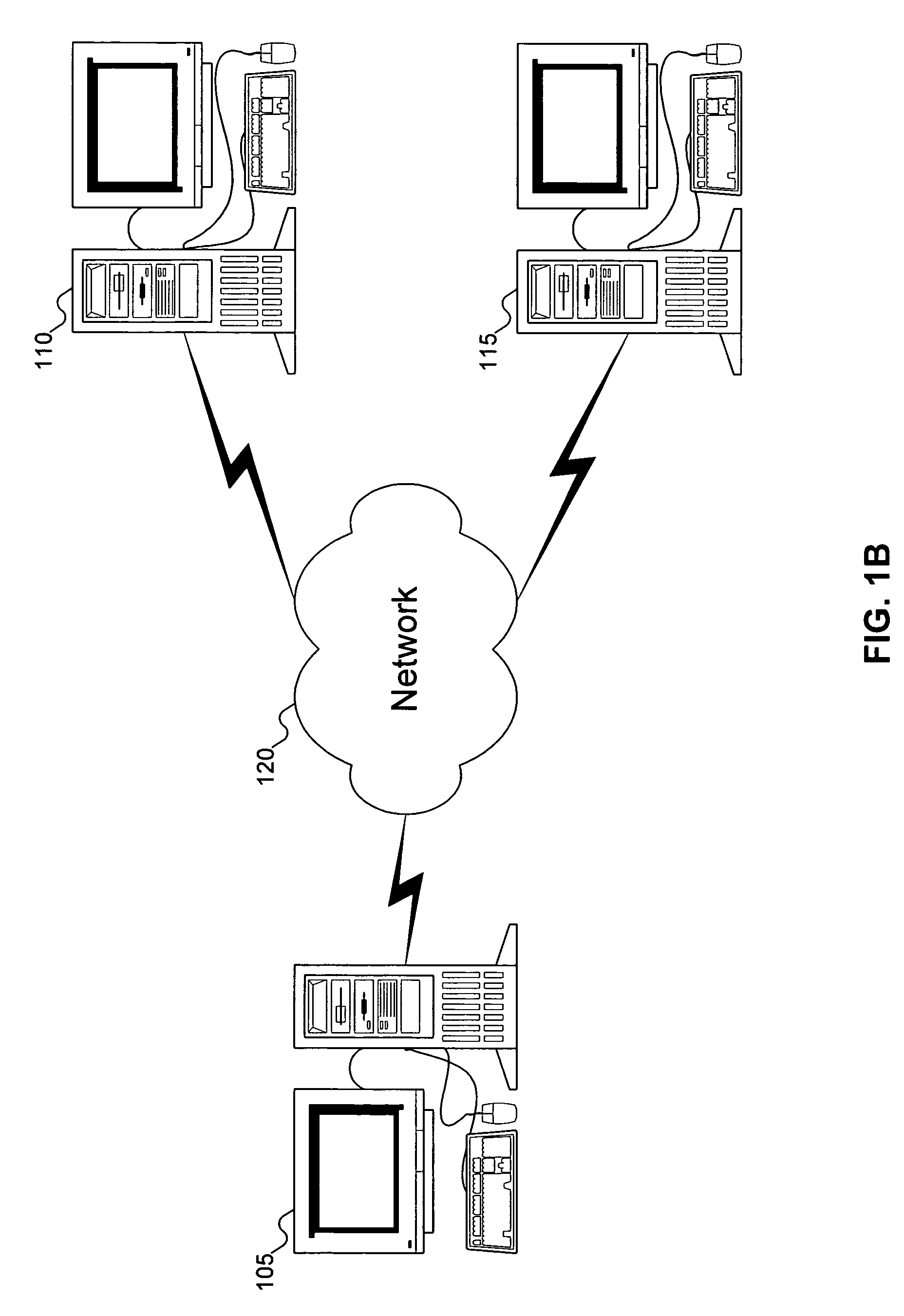Multi-team immersive integrated collaboration workspace
a collaboration workspace and multi-team technology, applied in the field of collaboration, can solve the problems of prohibitive travel costs for each team member, team members may not sit down together in a single room, and the cost of arranging travel for each team member is often high
- Summary
- Abstract
- Description
- Claims
- Application Information
AI Technical Summary
Problems solved by technology
Method used
Image
Examples
Embodiment Construction
[0038]The hardware and software used to implement an embodiment of the invention may operate in accord with a client-server model. The client hardware may be any variety of computer located convenient to the user. For example, the client may be a desktop computer, a laptop computer, a personal digital assistant (PDA), or even a terminal (with no local computing ability). The server hardware may be any variety of computer as well, although if the client is a terminal, the server would provide the processing power for the terminal.
[0039]The software on the client and server implement the embodiments of the invention described above. The server stores information about the project (and, by extension, about other projects, possibly including projects to which the user is not a member). Projects are also sometimes called collaborative workspaces. There may also be several servers, each storing information about different projects, and as will be appreciated by one skilled in the art, the...
PUM
 Login to View More
Login to View More Abstract
Description
Claims
Application Information
 Login to View More
Login to View More - R&D
- Intellectual Property
- Life Sciences
- Materials
- Tech Scout
- Unparalleled Data Quality
- Higher Quality Content
- 60% Fewer Hallucinations
Browse by: Latest US Patents, China's latest patents, Technical Efficacy Thesaurus, Application Domain, Technology Topic, Popular Technical Reports.
© 2025 PatSnap. All rights reserved.Legal|Privacy policy|Modern Slavery Act Transparency Statement|Sitemap|About US| Contact US: help@patsnap.com



